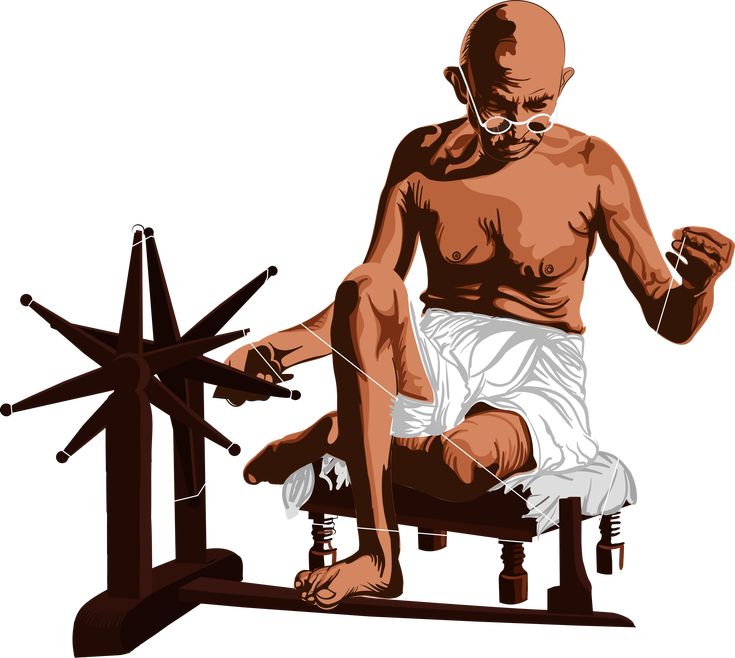Khadi: The Fabric of India’s Legacy and Its Modern Revival
Khadi, a hand-spun and hand-woven fabric, has played a vital role in shaping India’s historical and cultural narrative. Its roots in India’s independence movement have evolved into a contemporary fashion statement that embodies sustainability and ethical practices. This article explores how Khadi, an eco-friendly fabric, continues to shape modern fashion, reviving traditional craftsmanship and pushing for sustainable, ethical fashion.

I. The Historical Significance of Khadi
1. It’s Roots in India's Freedom Movement
Khadi’s association with India’s independence, led by Mahatma Gandhi’s Swadeshi movement, marked the fabric’s shift from a simple cloth to a symbol of resistance and self-reliance. Gandhi’s promotion of it encouraged Indians to boycott British goods and embrace indigenous fabrics, making it a tool for economic self-sufficiency and national pride.
2. The Role of Khadi in the Swadeshi Movement
It wasn’t just a material but a vehicle for social transformation. By advocating the spinning and weaving of it, Gandhi sought to uplift rural economies, create jobs, and empower communities—particularly women. The charkha (spinning wheel) became a symbol of resistance, turning it into a patriotic statement during the freedom struggle.
II. Characteristics That Make Khadi Unique
1. Hand-Spun and Hand-Woven Craftsmanship
Khadi is labor-intensive, hand-spun, and hand-woven, with no use of modern machinery. This process gives it a unique texture, where no two pieces are the same. Each piece is a reflection of the weaver’s skill, creating a fabric that is both distinct and personal.
2. Breathability and Adaptability to Climate
The breathable nature of it makes it ideal for Indian climatic conditions. It keeps the wearer cool in summer and warm in winter due to the unique qualities of the fabric’s weave. It’s absorbent, comfortable, and ages gracefully, becoming softer over time.
III. Khadi: A Symbol of Sustainability
1. Eco-Friendly Production Process
The production of it uses minimal resources. Since it’s spun and woven by hand, it consumes no electricity or industrial energy, making it one of the most sustainable fabrics in the world. The reliance on human labor over machines keeps its carbon footprint low, aligning it with the principles of eco-conscious fashion.
2. The Revival of Traditional Craftsmanship
Khadi production helps to preserve India’s rich heritage of hand-weaving. As industrialization threatened traditional crafts, it’s revival has ensured that these age-old techniques survive and thrive in modern times, offering a livelihood to rural artisans who rely on the craft.
IV. The Impact of Khadi on Modern Fashion

1. The Shift Towards Ethical Fashion
As the world moves towards ethical fashion, Khadi has emerged as a perfect example of sustainable fabric. Its handwoven nature, minimal environmental impact, and focus on fair wages for artisans make it an ethical choice for fashion-conscious consumers.
2. Celebrity Endorsements and Designer Collaborations
In recent years, it has garnered attention from designers and celebrities. Influential fashion designers like Sabyasachi Mukherjee and Ritu Kumar have incorporated Khadi into their collections, blending traditional techniques with modern styles. This has brought it into the global spotlight, positioning it as a high-fashion, eco-friendly fabric.
V. Khadi’s Role in the Self-Reliant and Sustainable Lifestyle
1. Supporting Local Economies
It plays a vital role in supporting local economies, especially in rural India. By purchasing it, consumers contribute directly to the livelihoods of artisans and weavers, encouraging economic growth within villages and small communities. The Khadi and Village Industries Commission (KVIC) continues to support these efforts, promoting it as a means of self-reliance.
2. Global Appeal and Export Market
Khadi’s global appeal has grown steadily, especially in markets where sustainable and slow fashion are gaining traction. As consumers worldwide become more aware of the ecological impact of their choices, it offers an alternative to fast fashion, with its long-lasting durability and low environmental footprint.
VI. Challenges Facing Khadi in the Modern Era
1. Competition from Fast Fashion
Despite its numerous benefits, Khadi faces competition from fast fashion, which offers cheaper alternatives. The time-consuming process of hand-spinning and weaving makes it more expensive than mass-produced fabrics. However, its ethical and sustainable nature continues to attract conscious consumers.
2. The Need for Market Expansion and Awareness
One of it’s challenges is the need for greater awareness and market expansion. While it is revered in India and supported by the government, it’s international presence can still be further expanded, especially with the rise in demand for sustainable textiles.
VII. The Future of Khadi: Continuing Its Legacy

1. A Fabric for the Future
Khadi’s future looks bright as it aligns with the growing trend of sustainable, slow fashion. As consumers seek out ethical and eco-friendly choices, it stands as a fabric that not only honors India’s past but also offers a sustainable path forward. The integration of modern design with traditional weaving techniques ensures that it remains relevant to the demands of today’s fashion world.
2. Supporting Sustainable Fashion Movements
Khadi’s alignment with the slow fashion movement encourages consumers to move away from disposable fashion and invest in timeless, durable pieces. Its natural beauty, unique texture, and cultural significance make it more than just a fabric—it’s a lifestyle choice that supports sustainability, local artisans, and ethical consumption.
Conclusion: Enduring Influence on Fashion and Sustainability
Khadi, once a symbol of India’s struggle for independence, has now transformed into a beacon of sustainable and ethical fashion. Its journey from the freedom movement to the global fashion stage is a testament to its versatility and timeless appeal. As more people embrace eco-friendly and ethical choices, it continues to revive traditional craftsmanship and offer a path toward a self-reliant and sustainable future.
Khadi is not just a fabric—it’s a philosophy, embodying simplicity, sustainability, and a deep connection with India’s cultural roots. Whether worn as a political statement or a fashion trend, it’s impact on modern fashion remains profound, reminding us of the value of heritage, craftsmanship, and environmental responsibility.
